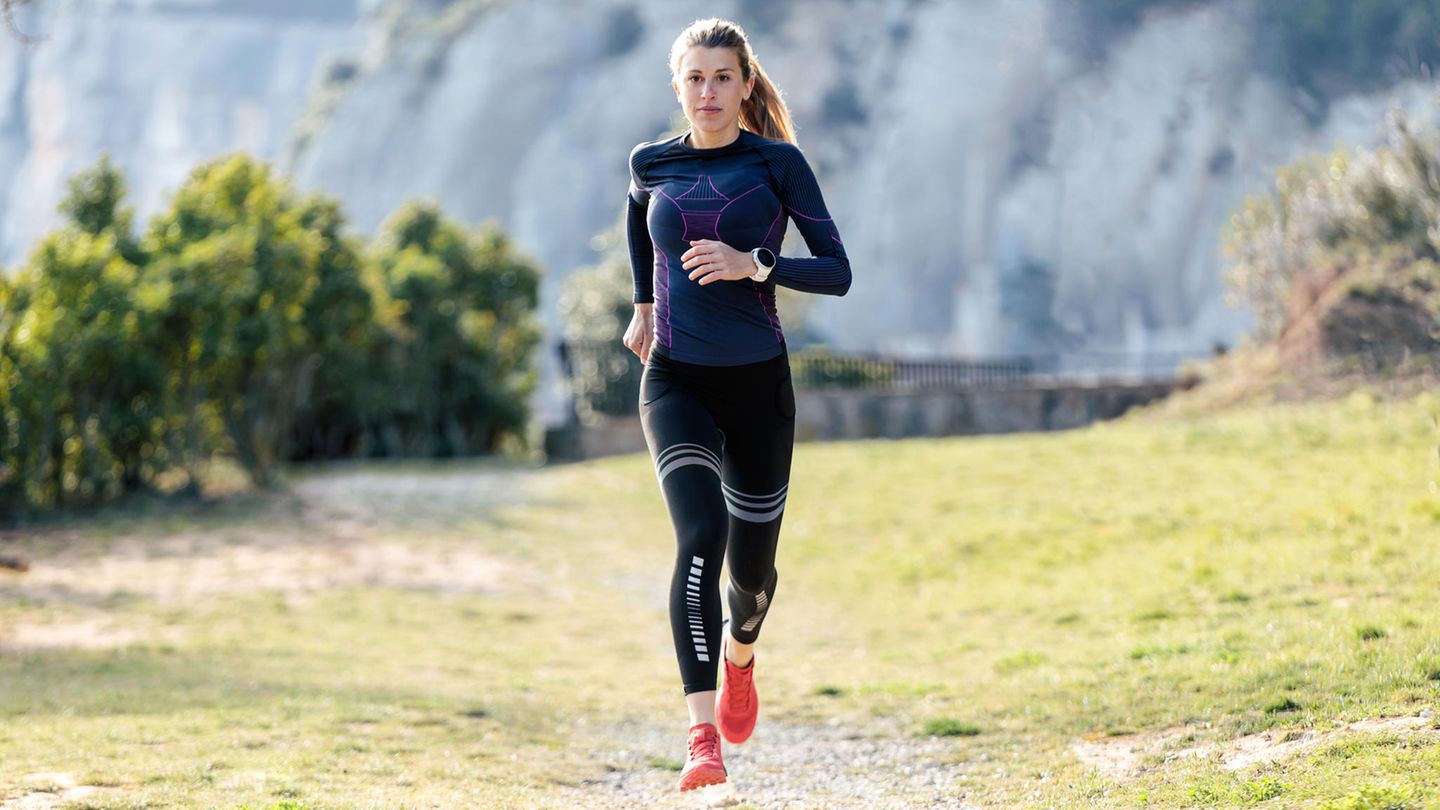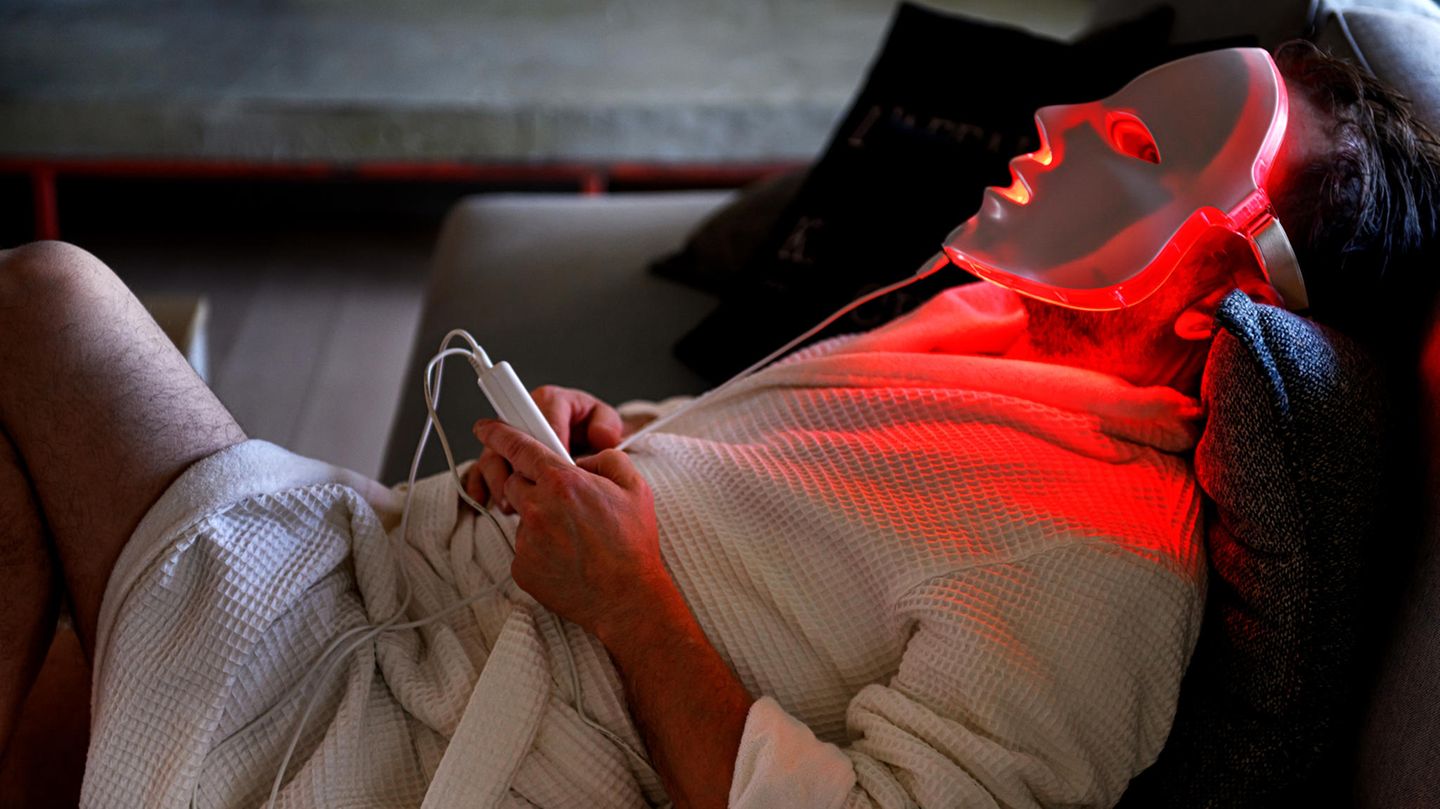Function vs. cotton
Jogging outfit out of the hoodie in spring-pure in pleasure!
Jogging polarized. Some cannot understand the attraction without, others. The spirits also often differ on the outfit. Cotton vs. microsis lide. An attempt to explain.
One has to leave the millions of joggers in Germany: they are extremely creative. There is almost nothing that men or women would not wear in their Sunday run. The classic: a worn-out cotton hoodie, combined with no less worn jogging pants. No matter what temperature. In addition, a few down-to-down leisure sneakers. Others seem to understand their training round as a kind of catwalk, wear wool hat, floral leggings, including running skirts and color -coordinated shoes.
And then there are the athletes wrapped from head to toe in functional laundry, who conjure up the adequate running robe out of the closet for every weather. Only that we don’t get along wrong: dresses do not make runners. First of all, everyone should wear what they find comfortable and what they feel most comfortable. But cotton, the fabric in which beginners in particular like to wrap while running, has several disadvantages.
You can read what these are, why you should try functional clothing with your jogging outfit and what the so-called 3-layer principle is, read in this article.
Problem material cotton: wet, heavy, unsanitary
Doctors and running experts critically assess cotton shirts. In contrast to functional (and synthetic) running clothing, the tissue sucks up with sweat during sporting stress. Problem 1: The natural fibers do not release the liquid again. This leads to problem no. 2: The shirt or sweater are more difficult with every minute. In the worst case, the gossip wet tires at some point on the skin – for example under the arms. The nipples are particularly sensitive. So that the clothes are not ruined through blood stains, beginners should also be too a synthetic material, use freezing – especially at temperatures. This light piece of clothing is not only close to the body, it also ensures that the sweat is first transported away from the body and therefore cools down less quickly. As a rule, you don’t have to spend too much money.
Running and functional underwear in the quick check
- lies close to the body (directly on the skin)
- picks up sweat and transports it away from the body
- Processed fibers hardly store any moisture
- Prevents the upper body to cool down by evaporation
- Skin remains dry and warm
- Important basic layer in cool weather
The isolation layer: Caution in cotton
While the functional underwear is usually hidden when running, fashion -conscious runners can get color into the game in the insulation layer. Because in spring -like temperatures a good thing is sufficient And a long-sleeved, slightly roughened running or fleece shirt to keep the body warm. In cooler temperatures, on the other hand, the so -called insulation layer lies in the sandwich of functional underwear and protective layer, i.e. the running jacket. Basically, the fibers of the running shirt have similar properties and tasks as underwear. It is intended to warm up and continue to lead the moisture “handed over” by the underwear instead of saving it. Cotton cannot meet these requirements and would interrupt the transport of the sweat. In the transition period between winter and spring, light fleece shirts or jackets are the best choice here.
Long-sleeved running shirts in the quick check
- is pulled over the running underwear
- should warm and continue transporting sweat
- Binding song between underwear and protective layer
- must not save moisture
- can be worn as an outer layer in milder conditions
- The more volume (e.g. fleece), the warmer
Which brings us to the third layer of the well-known 3-layer principle. The outer layer and its membranes should protect the body against wind and water while running from the outside. At the same time, one the water vapor that was transported “into freedom” by the inner layers. A remarkable performance that only create high -quality breathable membranes. And you will guess it: here, too, cotton jackets do not make a stitch. They suck themselves with the sweat from the inside and the wetness of the outside, become more difficult to slack with every kilometer and sooner or later slack. The tissue cannot stop the wind either.
Run jackets in a quick check
- acts as an external protective layer
- Functional fibers shield bodies from wind and water
- Membrane should be water vapor -repellent (breathable)
- Sweat has to get through the jacket outwards
A complete jogging outfit naturally includes more than just the 2 or 3 layers for the upper body. At temperatures of ten degrees and below, if possible, long running trousers should be used in order to prevent muscular tension. With slightly roughened and tight -fitting trousers you can’t go wrong. With somewhat other models there is a risk of scouring points. In addition, they keep their legs warm less reliably.
When it comes to running socks, the topic of cotton comes into play again. Feet producing sweat, a lot of sweat. This is also why it is not crucial how thick the socks are regardless of the weather (or have you ever got cold feet when jogging?), But that they are properly sitting. So give your feet a couple With slightly reinforced fibers in the forefoot and on the heels. Many manufacturers rely on the left and right socks and cut their models to men and female feet.
We give around a quarter of the entire body heat over the head. It makes sense why it should also be protected. And that – you already suspect it: with a hat as breathable as possible. As much as you like your beanie or the poodle hat, while running you leave your favorite hat better at home. Good services do hats with an integrated fleece layer, but also that can be turned into a fashionable running hat in no time. If the temperatures rise, a hat can be counterproductive, because the heat cast from the head should not stow.
Gloves are one of the rather rare clothes when jogging. But in cool wind and temperatures of five degrees or colder, the fingers should also be protected. The body first removes the hands and feet, so that they quickly get cold. As a rule, thin gloves are enough to prevent cooling. If in doubt, they can then be pulled out during training and stowed in a jacket pocket. The frostbite under the runners best reach the somewhat thicker variant. The Are windproof and reliably keep your fingers warm in the cold season.
Source: “The Bible”
*This article contains so-called affiliate links to products in online shops. If a user clicks on it and buys something, the publisher receives a commission from the dealer, not from the manufacturer. Of course, where and when you buy a product is up to you.
Source: Stern
I am Pierce Boyd, a driven and ambitious professional working in the news industry. I have been writing for 24 Hours Worlds for over five years, specializing in sports section coverage. During my tenure at the publication, I have built an impressive portfolio of articles that has earned me a reputation as an experienced journalist and content creator.




